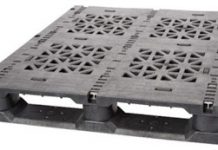I recently attended the Optoelectronic Industry Development Association’s (OIDA) "Green" Photonics Forum. Unlike dirty industries trying to appear green, the Optoelectronics industry does not really have to try to be green. Two prominent examples familiar to clean energy investors are Concentrating Photovoltaic Solar (CPV) (i.e. using optics to focus light on high efficiency solar cells) and Light Emitting Diodes (LEDs).
The presentations on Tuesday focused on the above technologies, and I was struck by a common problem faced by both: heat dissipation. According to Sarah Kurtz, a National Renewable Energy Laboratory scientist leading the team working on high-efficiency, multi-junction solar cells used in CPV, one of the key challenges for CPV integrators is bonding the solar cell to the heat sink. This bond needs to be uniform, without any bubbles, and needs to be able to withstand large, rapid temperature changes, as the amount of light and heat on the chip goes from practically nothing to hundreds of suns.
What can LEDs not do at 150 lumens per watt?
The keynote speaker at the conference was Jay Shuler of Philips (NYSE:PHG) Lumileds. He’s confident that white, high power LEDs which have been demonstrated in the laboratory to produce up to 150 lumens per watt will make their way to the marketplace in the next couple years. At this level of light production, commercially available LEDs will surpass even the most efficient light sources available, low pressure sodium lamps (no, not CFLs, which typically produce about 100 lm/w) with much better color rendering. But there are lighting markets that LEDs will have difficulty penetrating even when they are the most efficient white light source, namely retrofit markets for standard light bulbs (i.e. you will keep your CFLs for some time yet.)
The problem with fitting into the form factor of a standard bulb in a standard socket is, once again, cooling. The first commercially available100W replacement LED bulb actually contains a fan for cooling… a step away from the solid state reliability we would expect from LED bulbs. Jay suggested that buyers of such bulbs should be very concerned about quality and durability of such bulbs.
As an aside, I have been using a 60w replacement (using 5w) in an outdoor light, and four 25w candelabra replacements (at 2w each) in a fan since January, without any problem yet. On the downside, although the candelabra bulbs have a long, shiny base for cooling. The light quality (soft white, about 3000K color temperature) has been excellent, and seem brighter than I would expect from the bulbs they are meant to replace.
Can we invest in heat sinks?
Often the most profitable way to invest in an industry is to invest in the suppliers of hard-to find technology for that industry. For instance, one of the best ways to invest in solar during the silicon shortage from 2004-2007 was suppliers of silicon. This may be more difficult to profit from than silicon, because heat sinks are not particularly high-tech, but, as Dr. Kurtz pointed out, the connections to the heat sinks are.
This leads me to look for current industry leaders in thermal management, who might have relevant expertise. A search for "Thermal Management Solutions" led me to several companies such as Rogers Corp (ROG), which is focused on wireless communication and computer markets. Given this focus, they probably have some expertise to apply to LEDs, but not necessarily any that might apply to the extreme temperatures of CPV. I also found a few private companies, of which the most promising for this market was Plansee, because of their experience in both optical and military markets, and claims the "ability to braze metal to metal, ceramic to metal and ceramic to ceramic to exacting specifications and tolerances."
Unfortunately, as a private company, Plansee is not an option for public market investors. The question remains open for readers: Is there a publicly traded company with experience in thermal management for the extreme temperatures needed for CPV?
DISCLOSURE: Tom Konrad and/or his clients have long positions in PHG.
DISCLAIMER: The information and trades provided here and in the comments are for informational purposes only and are not a solicitation to buy or sell any of these securities. Investing involves substantial risk and you should evaluate your own risk levels before you make any investment. Past results are not an indication of future performance. Please take the time to read the full disclaimer here.









Dear Mr. Konrad:
Your comment on the similarity of requirements for thermal mangement in photovoltaics and LEDs is right on target. In addition, they are the same for electronics.
In response, many advanced thermal management materials have been developed. Rogers and Plansee are involved, but there are other companies as well. Plansee has dropped out of the diamond composite business, but others continue.
I would be happy to send papers on the subject if you are interested.
Carl Zweben PhD – Composites and Thermal Materials
Life Fellow, ASME; Fellow, SAMPE & ASM
Associate Fellow, AIAA
62 Arlington Road
Devon, PA 19333-1538
USA
Phone:610-688-1772
c.h.zweben@usa.net